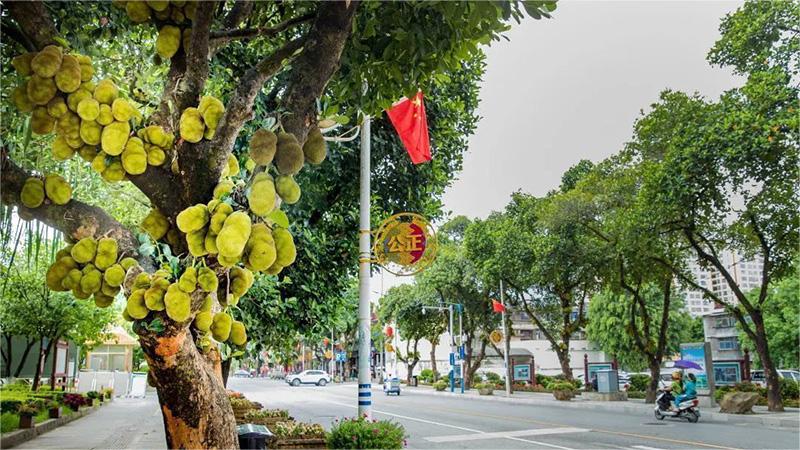China's tech innovations benefit electricity development in Global South
BEIJING, July 15 (Xinhua) -- China is at the technological forefront of electricity development and has provided the world with experience and practices in electricity innovation, according to a report issued on the sidelines of a high-level conference recently held in Beijing.
At a sub-forum of the second high-level conference of the Forum on Global Action for Shared Development, the Global Energy Interconnection Development and Cooperation Organization (GEIDCO) issued the Research on Global Electricity Development Index.
The sub-forum, which was held Friday, was themed on energy transition and sustainable development. It was organized by GEIDCO, a non-profit international organization headquartered in Beijing and dedicated to promoting sustainable energy development worldwide.
Guan Xiupeng, vice director of GEIDCO General Office, told Xinhua that China's vast territory, with diverse geographical features such as deserts, forests, plateaus and permafrost areas, has an impact on economic and social development.
"Based on such conditions, China has explored electricity technologies and development models that are suitable for its development and has accumulated a wealth of experience on project construction, which can also be shared with other countries, especially in the Global South," he added.
The research report mentioned that China is at the technological forefront in new energy power generation, Ultra High Voltage (UHV) power transmission, flexible direct current transmission, and the digitization and intelligentization of electricity systems.
Taking UHV for example. The development of UHV technology is driven by the long distance between China's clean energy resources, mostly in the western regions, and consumption centers in east China. It has not only solved the problem of long-distance, large-capacity power transmission but also realized the mass consumption of clean energy.
On the other side of the globe, UHV technology has found its place in Brazil, a country with abundant hydropower resource in tropical rainforest in its northern part, and densely populated areas in the south.
The State Grid Corporation of China (SGCC), a leading state-owned utility company, has applied the technologies and experience earned at home to this South American country, including 800kV UHV direct current transmission technology, which sends electricity from the Belo Monte hydroelectric plant in Para state to big cities like Rio de Janeiro and Sao Paulo.
The mega-project traverses a vast area, stretching more than 2,000 km over tropical rainforests and rivers, to supply the power consumption of some 22 million people, about 10 percent of the Brazilian population.
As of now, 180 billion kWh hydropower has been delivered via the project, equivalent to saving 64 million tonnes of standard coal or cutting 170 million tonnes of CO2 emission.
The project strictly complies to environmental regulations. When laying power transmission lines, the engineering teams bypassed the local indigenous settlements and ecological conservation areas in accordance with local laws and regulations. In 2019, it was recognized as the best social and environmental management practice in Brazil.
Besides the project construction, Chinese companies also promote technology transfer by training local talent for long-term operation and maintenance, with the smart electricity meter project in Saudi Arabia as one such example.
The agreement for the project was signed by SGCC and Saudi Electricity Company in 2019, and included the installation of 5 million electricity meters and the development of supporting facilities. Technology services, equipment integration, trial tests, and maintenance and personnel training were also part of the project, which was the largest deployment of smart electricity meters in the world at the time.
Deng Guoxue, one of the project experts from SGCC, was busy not only with installation work, but also with running local personnel training classes. He developed a set of English training materials, including textbooks, lecture notes and student manuals for his Saudi colleagues.
Ihab Mohammad, one of the local trainees, said he had witnessed the diligence, responsibility and professionalism of the SGCC employees, who have completed a high-quality project with their wisdom and hardwork to benefit the local people.
The Chinese contractors not only build power systems, but also bring domestic experience to the field of environmental protection, enhancing the overall environmental level of the projects.
Located in the coastal, sandy area of Binh Dinh Province in Vietnam, the Phu My 330-megawatt photovoltaic power station is a major new energy project in Vietnam's National Power Development Plan 7, and is the largest photovoltaic power station in central Vietnam.
The Power Construction Corporation of China, the project contractor, also considered the various application potentials during the project's design, such as expansion of energy storage, hydrogen and ammonia production, and desalination of seawater by green electricity.
As of the end of April 2023, the project had generated and sent a total of 695 million kWh of electricity to the grid, equivalent to cutting 670,000 tonnes of carbon dioxide emissions, or saving 220,000 tonnes of standard coal.
The project also transformed and utilized about 325 hectares of desertified and barren land, significantly reducing dust storms and improving local environment.
Photos
Related Stories
- Promising prospects for China-Central Asia green energy cooperation
- World needs China’s new-energy opportunities, not zero-sum games
- Bulldozers transform Kubuqi Desert with photovoltaic power plant
- Solar power station drives green development in Shandong
- China-EU green energy partnership drives sustainable development across borders
Copyright © 2024 People's Daily Online. All Rights Reserved.









